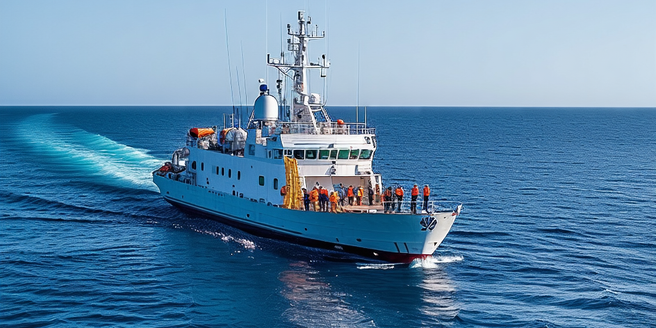
The Importance of Oceanographic Data in Climate Studies
Understanding the oceans plays a crucial role in climate studies, as they are the largest carbon sink on the planet. Oceanographic data help scientists monitor changes in sea temperature, salinity, and currents, giving insights into how these elements affect global climate systems. This data is essential for revealing long-term trends in climate and for predicting future climate behavior. Changes in ocean conditions can significantly impact weather patterns, marine ecosystems, and even coastal communities. For climate models to be accurate, the integration of oceanographic data provides a more comprehensive view of the earth’s climate mechanisms, highlighting how interconnected our global system truly is. Thus, oceanographic data represent a vital component in the quest to understand and predict our changing world.
How Ocean Currents Influence Global Climate Patterns
Ocean currents are powerful conveyors of heat and energy, affecting weather and climate across the globe. They distribute warm water from the equator to the poles and cold water from the poles back to the tropics, influencing weather patterns and climate variations worldwide. The Gulf Stream, for example, enables Europe to enjoy a milder climate than other regions at the same latitude. Disruptions in these currents can lead to significant climate changes, such as the El Niño phenomenon, impacting global agriculture, water resources, and weather patterns. Understanding how ocean currents operate is paramount in predicting and mitigating climate change impacts. Therefore, comprehensive studies and continuous monitoring of these currents are crucial for developing effective climate strategies.
Technologies Used to Collect Oceanographic Data
A variety of advanced technologies are used to gather oceanographic data, contributing to our understanding of marine and climate dynamics. Research vessels are equipped with sensors and instruments like CTD (conductivity, temperature, and depth) sensors that provide valuable data on water properties. Satellites offer large-scale, long-term sea surface observations, while autonomous underwater vehicles (AUVs) capture data in hard-to-reach ocean depths. Drifting buoys are deployed to track currents and monitor environmental conditions in real-time. These technologies, combined with crowd-sourced data and citizen science projects, create a comprehensive network for ocean data collection. Innovations in oceanographic technology continue to enhance our ability to study the oceans and predict their influence on global weather patterns.
Challenges in Interpreting Oceanic Data for Forecasting
Interpreting oceanic data for climate forecasting poses several challenges. The vastness and depth of the oceans make data collection difficult, leading to gaps in knowledge and coverage. Variability in ocean conditions adds complexity, as short-term fluctuations can obscure long-term trends needed for accurate predictions. Moreover, the intricate interactions between oceanic and atmospheric systems require sophisticated models to simulate possible future scenarios accurately. Understanding these interactions is crucial for developing effective climate policies. Even with advances in technology, combining data from different sources remains tricky due to issues of scale and resolution. Thus, continuous investment in research, technology, and international collaboration is necessary to refine models, fill data gaps, and improve the accuracy of ocean-derived climate predictions.
Future Trends in Ocean-Based Climate Prediction Models
The future of ocean-based climate prediction models looks promising with advancements in data integration and computational power. Machine learning and artificial intelligence are being increasingly employed to process vast datasets, identify patterns, and improve model accuracy. The integration of real-time data from satellites, autonomous vehicles, and sensor networks is enabling more dynamic and adaptive forecasting systems. Collaboration across disciplines and international borders is also driving innovations in model development. Emphasis on high-resolution regional models allows for more precise predictions tailored to specific areas, improving our ability to respond to climatic changes. These trends suggest a future where climate predictions are more reliable, assisting policymakers in making informed decisions for climate resilience and adaptation.
